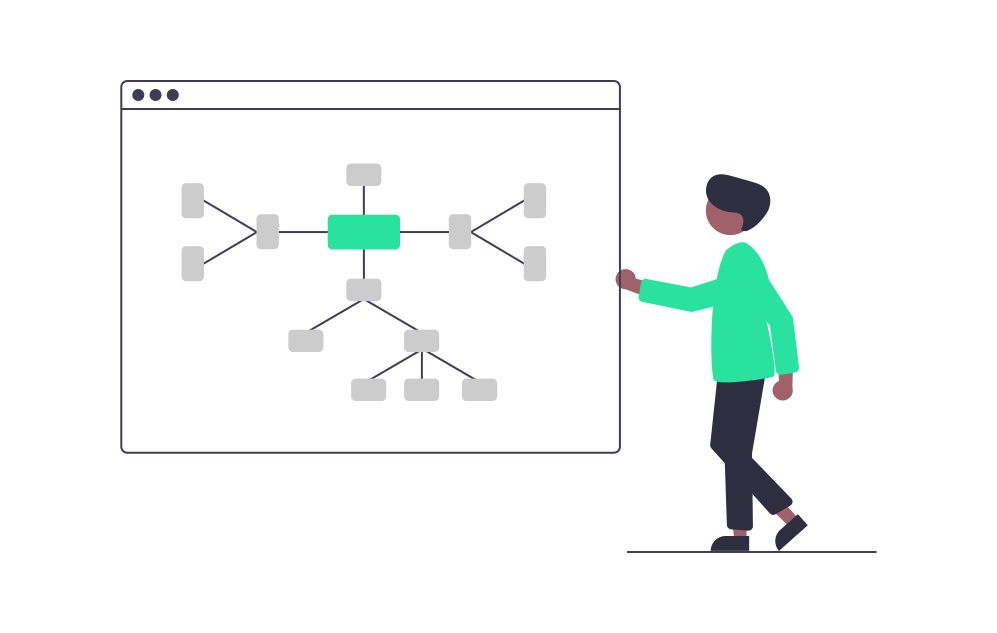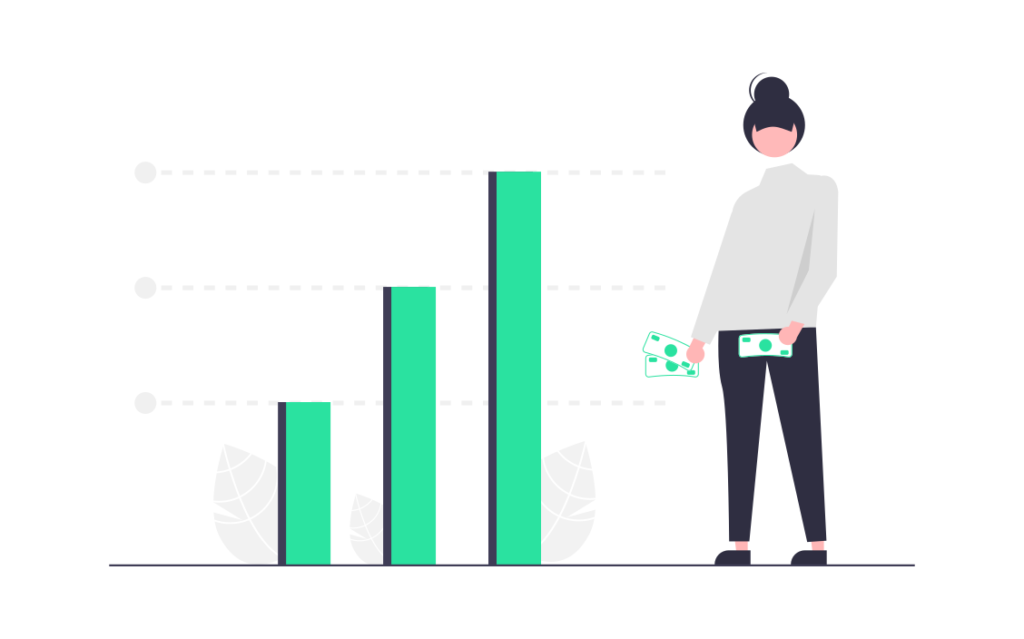Table of Contents
Algorand uses a Pure Proof of Stake (PPoS) system, an approach that links the security of the whole economy to the majority’s honesty. Similar to other Proof of Stake systems, each user’s influence on the choice of a new block is proportional to the number of tokens they have staked in the system. Algorand’s native token is ALGO, and it functions as the medium of exchange and store of value. The network validators must further stake the token.
Key Takeaways
- Algorand was founded by Silvio Micali to ensure true decentralization, scalability, and security.
- Its native coin is ALGO, and it uses its original Pure Proof of Stake system.
- Algorand crypto trading is energy efficient and offsets its small carbon footprint with its partnership with services like ClimateTrade.
- Its benefits include low participation costs, fast block generation, no forking (all transactions are final), easy acquisition of rewards.
But First, What Really is Algorand?
Algorand’s blockchain technology was first used in the open-source Algorand’s MainNet. Algorand was launched in 2019 by a research team led by Silvio Micali, Turing award-winning cryptography pioneer, and MIT professor. It aims to solve the three main dilemmas of blockchain: scale, security, and decentralization. Overseen by the Algorand Foundation, the Algorand network is open-source, so it allows anyone to build upon it. It is also a permissionless PPoS blockchain ensuring protection, full participation, and speed in a decentralized network.

Algorand is designed to be payments-focused with fast transactions and a significant focus on achieving almost instant finality (processing 1,000 TPS and achieving finality in less than 5 seconds). Aside from that, Algorand offers ASCs (highly-customizable smart contracts), Asset Tokenization (Algorand Standard Assets), and Atomic Transfers built directly in Layer-1.
Algorand’s native token is the ALGO, which is the network’s medium of exchange. Interestingly, in 2021, Exodus completed an SEC-qualified Reg A+ token offering and sold about $75 million shares which were converted to tokens on Algorand. It was the first digital asset security that offered equity in a US-based issuing company.
ALGO / Algorand Staking: Steps Made Easy
Step 1: Connect The Wallet
Visit EGG.FI homepage, connect your wallet by clicking the green “Open Dashboard” button below or “Connect Wallet” on the upper right of the page. You will be brought to the “EGG Finance” page, from where you will be able to choose a wallet. For simplicity’s sake, a MetaMask wallet will be used for the explanation.
After selecting the wallet, you will see a pop-up on the right of the screen. After clicking “Sign,” your wallet will be connected.
Step 2: Staking ALGOrand
If your wallet is already connected, you can skip the first step and go directly to the “STAKING” page by clicking the button below. Once you click “Stake” on the “Algorand,” a window will pop up for you to write the amount of ALGO tokens you want to stake. Below you will also see your Annual Percentage Yield. The benefit of the EGG platform is that you can also get additional EGGs on any cryptocurrency you stake. Staking Algorand is now live and possible, and you can earn up to 7.30% staking rewards.
Step 3: Confirmation
Once more, you will see a pop-up on the right of the screen, enabling you to “Confirm” the ALGO tokens to stake. During this process, please do NOT leave or refresh; otherwise, your progress will be lost. At this time, you will see another pop-up where you would need to confirm the “Contract Interaction.” Once you see the “Transaction Submitted” message, your transaction will be complete.
Algorand and Its Unique PPOS Algorithm
Algorand is the first blockchain to develop and use the Pure Proof of Stake system, which is built on the Byzantine consensus. Online users get chosen randomly and privately to propose and vote on the suggested block. The likelihood of being chosen, and the weight of the users’ ideas and votes, is proportional to their stake.

Unlike some of the other Proof of Stake systems, with Algorand’s approach, users who own a small fraction of the money cannot harm the whole system. Similarly, owners of the majority would not have a good reason to misbehave since if the cryptocurrency’s purchasing power diminishes, it would also devalue their assets. But is algo a good investment?
Other benefits of this system include:
Participation Cost is Low
Anyone who is online and has a stake can participate in the protocol. And, since creating a block does not necessitate expensive computation, the computation, and financial costs are low and not a barrier to entry.
Influence is Tied to Stake
The only way to increase a user’s influence is by increasing their stake. So, splitting the stake into multiple accounts (pretending to be different users) or pooling it into one account does not give malicious users any advantage.
Blocks Generated Almost Immediately
Algorand’s communication overhead and low computation allow it to generate blocks within seconds. As such, the PPoS protocol can scale millions of users while maintaining a high transaction rate.
Algorand Does not Fork
With forks in a blockchain, it is possible for the block with your payment to end up in a dead branch since only the longest one will remain in the end. But in the case of Algorand, since it never forks, all transactions are final. So, users can be sure that their block will always be part of the chain, ensuring that the money they receive is secure.
Green Blockchain
From the beginning, Algorand was created as a green blockchain with a focus on environmental sustainability. Its original PPoS mechanism makes it more energy-efficient than another blockchain. In addition, Algorand goes a step further and offsets its small carbon footprint by partnering with Global Carbon Holding, ClimateTrade, and PlanetWatch.
How Much Algorand Staking Rewards Can You Earn?
Unlike another Proof of Stake blockchain, users simply need to hold ALGOs in their balance to generate Algorand Staking Rewards (called Participation Rewards) in Algorand’s unique system. The amount of rewards that are received varies depending on factors such as the user’s current balance, period, total circulating supply, and changes in the incentive program. The Algorand Foundation and its Economic Advisory review and update these rewards.

However, the rewards may not be received if you hold ALGOs in custodial wallets or exchanges. This largely depends on each service (if the company distributes the earned rewards back to its users). But fear not! EGG Finance provides non-custodial services, so you will be able to receive your rewards once the staking feature for ALGO is in place.
Final Thoughts
Algorand is a green blockchain that uses a unique Pure Proof of Stake mechanism. Based on the Byzantine agreement, the system randomly chooses online users who will propose and vote on a suggested block. The probability of being selected is connected to how much stake they have. With this system, owners of a small fraction of the cryptocurrency cannot harm the system, and owners of the majority would have their assets devalued if the system got harmed.
Aside from that, participation cost is relatively low, thus not a barrier. Additionally, blocks are generated almost instantly, and all transactions are final. Lastly, you can simply gain rewards by having 1 or more ALGOs in a non-custodial wallet.
Disclaimer: The opinion expressed here is not investment advice – it is provided for informational purposes only. It does not necessarily reflect the opinion of EGG Finance. Every investment and all trading involves risk, so you should always perform your own research prior to making decisions. We do not recommend investing money you cannot afford to lose.
Dictionary
Byzantine consensus – a communication protocol, enables users to reach consensus when malicious actors are present
Finality – the guarantee that transactions cannot be reversed, changed or canceled once they are complete
TPS – transactions per second
 English
English Français
Français Español
Español Bahasa Indonesia
Bahasa Indonesia 中文 (中国)
中文 (中国) Русский
Русский Português
Português Deutsch
Deutsch

